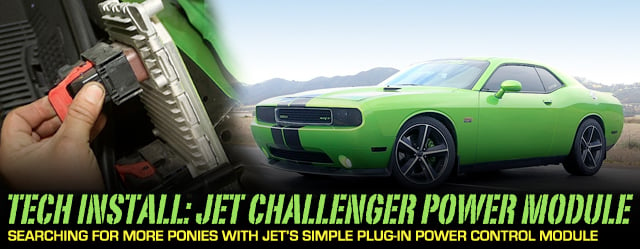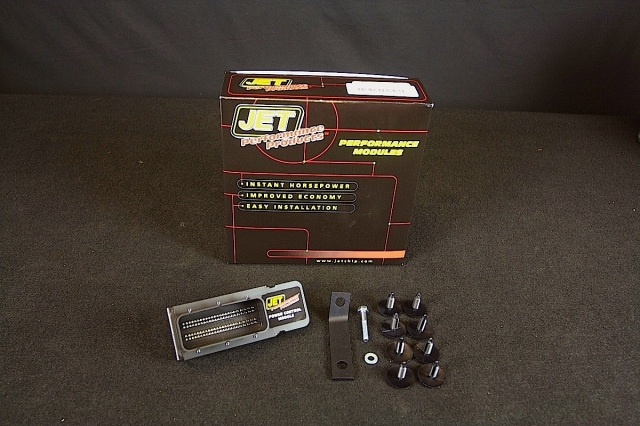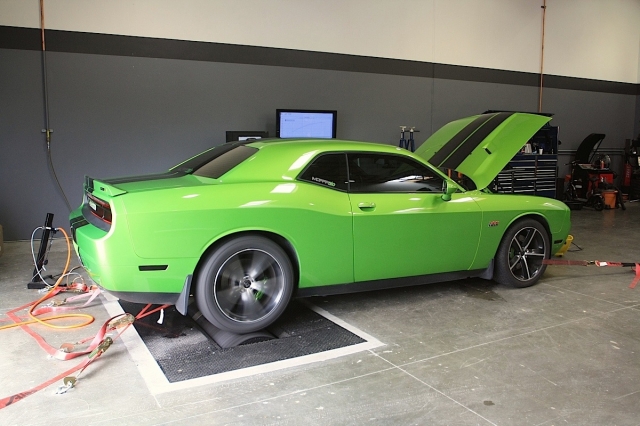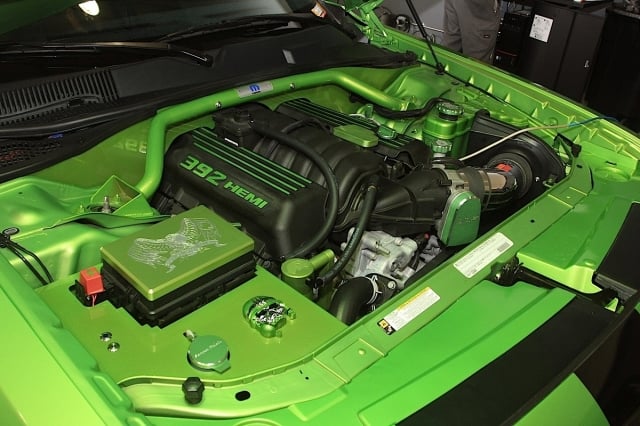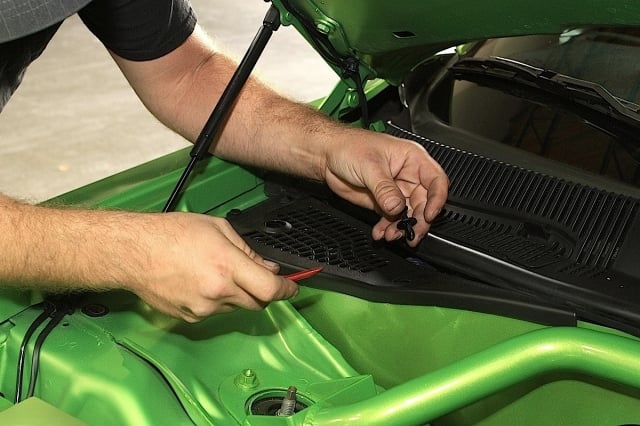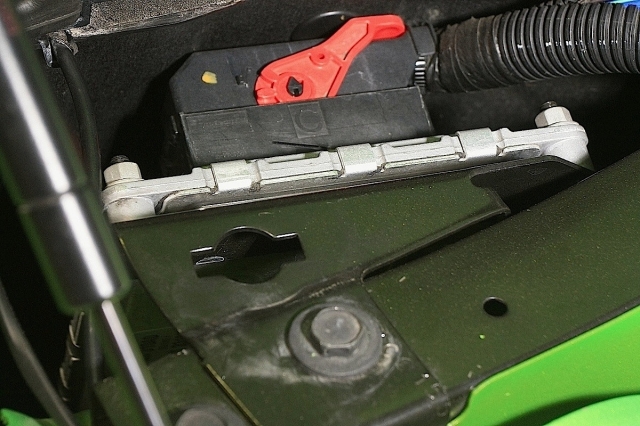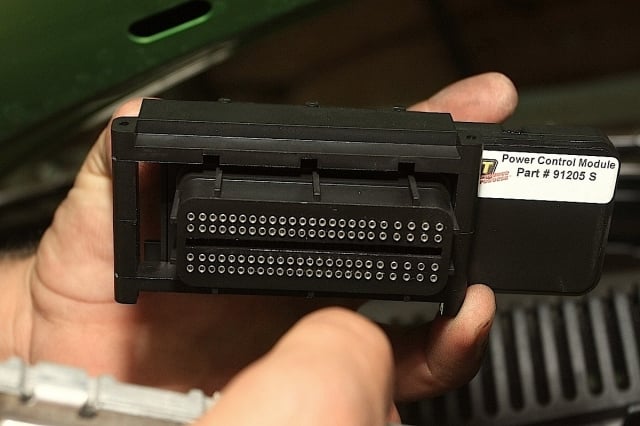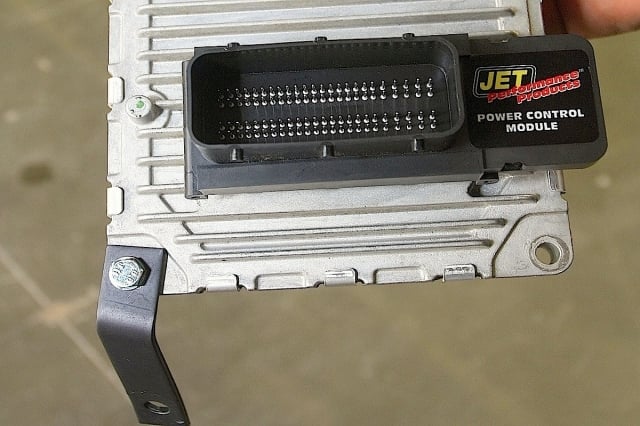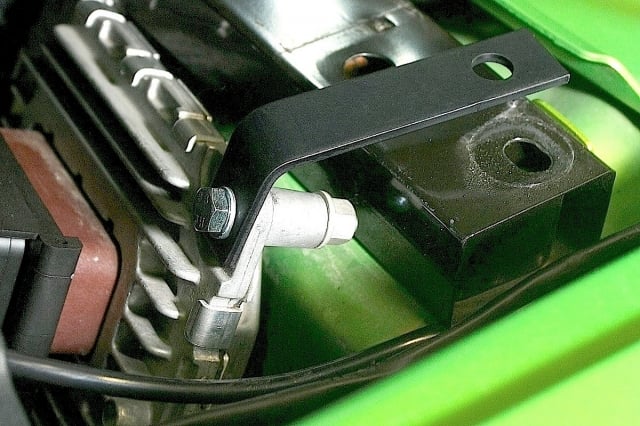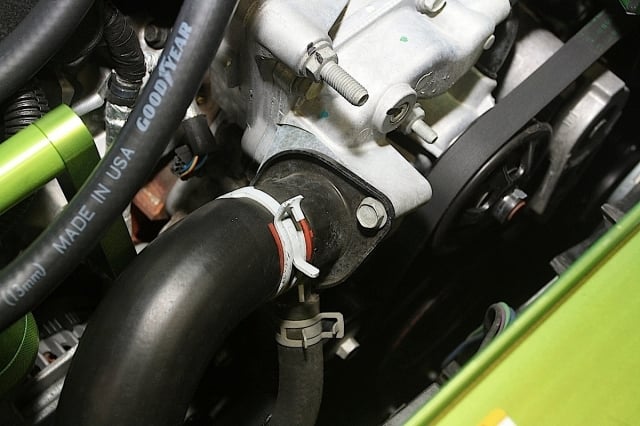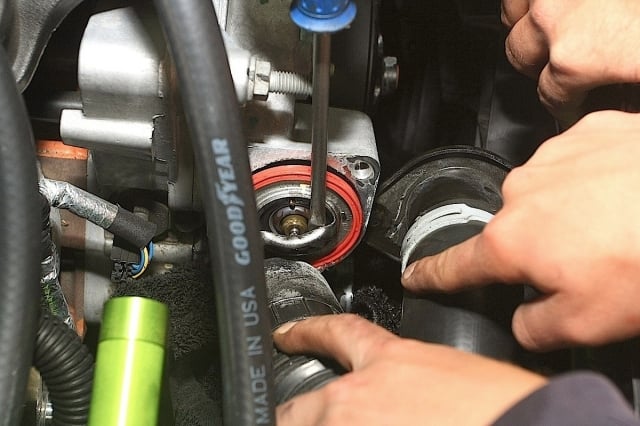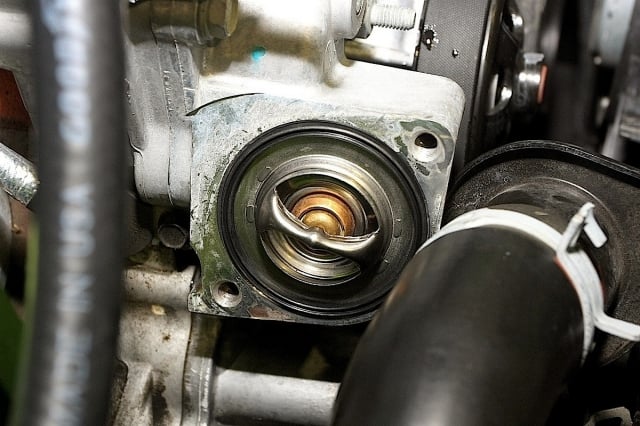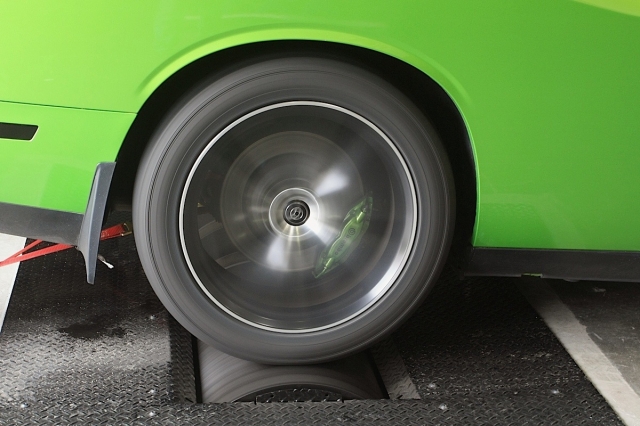Back in the old days, if you wanted to add performance to your engine, you needed to add things such as larger carbs, headers and such. Want to add duration for the intake cycle? You had to physically install a bigger cam. Want to change the spark? You had to physically curve the distributor. Now, increasing horsepower is as simple as tweaking the computer. Isn’t science wonderful?
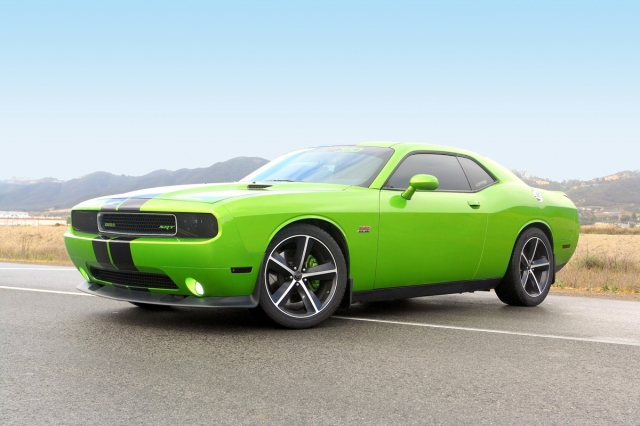 One company that has been at this game for a long time is JET Performance Products. JET started out over 40 years ago as Jones Performance Fuel Systems, so they have plenty of experience with making vehicles go faster.
One company that has been at this game for a long time is JET Performance Products. JET started out over 40 years ago as Jones Performance Fuel Systems, so they have plenty of experience with making vehicles go faster.
Another name that has an important place in the history of high performance is the HEMI. Saying the word conjures up visions of Swamp Rats and tire smoke. The cross flow head was a big step forward in performance and after a long absence, the Chrysler Corporation decided back in 2003 to resurrect the name.
It worked; the latest vehicles, such as this 2011 Dodge Challenger SRT8 392 (6.4L), proudly wear the name HEMI and folks have been lining up to buy them.
One of those buyers is U.S. Marine Gunnery Sergeant Juan Lovato. Lovato loves Mopars; he is the current president of Mopar360, a Mopar enthusiast club based in SoCal, and he’s done extensive aesthetic and performance upgrades on his Challenger. He wanted to increase the horsepower of his HEMI, and the JET Performance Module seemed the perfect choice to go with the K&N air intake system that adorns the engine.
The JET Performance Module for Dodge, Chrysler and Jeep vehicles is a JET exclusive. Using what JET calls Dynamic Spectrum Tuning, the module provides power gains across the entire power band and not just at full throttle. It’s this ability to make point-by-point changes to the air/fuel ratio, ignition advance and various other tuning points that provide performance gains of up to 25 horsepower.
JET claims their Performance Module improves throttle response, acceleration and low-end torque, and they can do it with a simple, plug-in installation that takes less than 30 minutes to accomplish.
To get the baseline numbers, the Challenger is strapped to the Dynojet and run up to speed. The rating is 384.06 RWHP and 376.47 lb/ft of torque. The performance of the Hemi has been upgraded with a K&N Typhoon air intake system to go with the many aesthetic improvements.
Performance Module: Plug-and-Play Installation
JET offers two versions of the Performance Module: Stage 1 is for stock or mildly modified vehicles and is able to be used with any grade of fuel. The programming adjusts the fuel and timing curves for optimal performance and mileage, even when using less expensive, lower octane fuels. According to JET, this results in both increased performance and MPG.
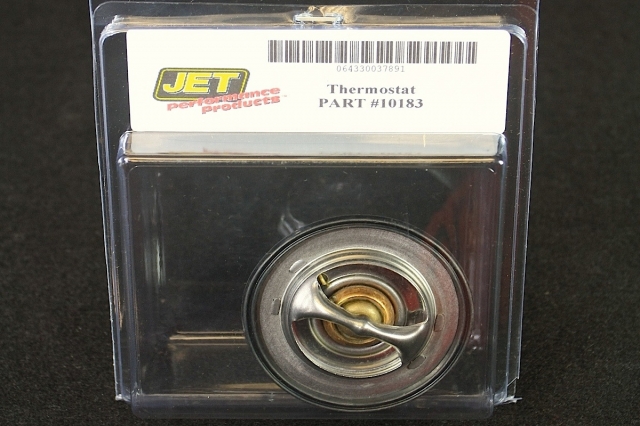
JET includes the recommended thermostat with the programmer module, it helps the engine to run more efficiently.
The Stage2 features a more aggressive programming to make the most horsepower and torque available. Fuel and timing curves are extensively modified for peak performance while retaining good drivability. It requires always running 91-octane fuel and a free flow intake and exhaust system. JET also recommends that a JET Stainless Steel 180-degree thermostat be used.
As they say, a more consistent control of engine temperature allows an engine to operate at its peak efficiency no matter what the driving conditions.
Wanting to see what the JET Performance Module would do, and to see just how easy the installation really was, we had Lovato come to the Power Automedia shop where Shop Tech Dean Jigamian installed a JET Stage 1 Power Module and a 180 degree thermostat into Lovato’s Challenger. First though, the car was strapped down to the Dynojet dynamometer to get some baseline numbers. After a few pulls, the best was 384.06 RWHP and 376.47 lb/ft of torque.
The ECM resides beneath a cover located near the cowl on the passenger side of the engine bay. Simply unplug the factory plug, and install the module on the ECM and reinsert the plug.
On the Challenger, the ECM resides in a cubby beneath a small plastic cover near the cowl on the passenger side. Removing it entails pulling the cover and removing a single bolt that affixes the ECM mount. Toggling a large red locking bar breaks the two large electrical loom connections and the unit can be removed in just a few minutes. The stock mounting-bracket is removed, so tack on another minute or two. Looking good, so far.
The JET Power Module is installed onto the “brown” connector by gently but firmly pushing the two together. Care must be taken to ensure that all the small pin connectors are lined up correctly first, this part of the puzzle took about 2 minutes.
The JET supplied mount is bolted to the ECM and the unit is bolted back in the stock location. With the cowl and cover back in place, the first part of the JET Performance upgrade is done. Next, it’s on to the thermostat swap.
JET supplies a new bracket to mount the ECM. It is attached to the ECM before attempting to install the unit back into its spot. Getting the inch or so wider ECM back in place requires that the cowl be lifted up and out of the way slightly, so the plastic mounting pins were removed. It also requires a little maneuvering to get the ECM back into its hole, but really wasn’t that big of a problem. It took about 10 minutes total to get the ECM bolted back into place and the cowl back on. Total install time was right around the 30-minutes that JET said it would take.
Luckily, the thermostat is right up front and a snap to work on. The new JET Performance Products 180-degree thermostat is installed, the water neck is bolted back into place and the coolant is topped off.
Mounting the new JET 180 degree thermostat was simple too, just a little messy thanks to the coolant that wanted to pour out when the neck was removed. Being right on top and at the front of the engine, at least the neck was easily accessible. A bunch of well-placed towels, a shop vac and quick hands kept the fluid from going everywhere, so not much of a problem there. Total install time for the thermostat was about 15 minutes.
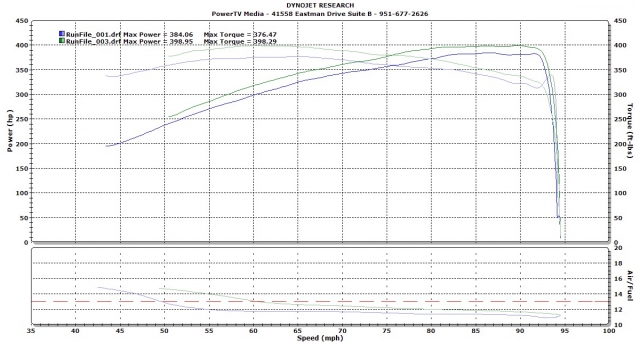
JET Performance advertises an increase up to 25 horsepower. With the given parasitic loss of about 15-20%, we saw a gain of 14.89, which puts it very close to the target. The torque increased 21.82 lb/ft, not bad for a plug-in module.
Dyno Results Show A Gain In RWHP and Torque
With the coolant topped off, the car was started and warmed up in preparation for the “after” dyno runs. As stated, the best pull from the “before” session was 384.06 RWHP and 376.47 lb/ft of torque.
This module puts a more aggressive program on top of the factory software. -Dan Nicholas
The very first pull after the JET Performance Module was installed was a full 398.95 RWHP and 398.29 lb/ft of torque. That’s an amazing 1hp for every 3 minutes spent on the combined install, roughly 14.89 RWHP. Somewhere Grumpy Jenkins is weeping.
With regards to how the JET Power Module performs in Lovato’s Challenger, it seems that horsepower gains for the venerable HEMI engine is as simple as 45 minutes of your time. Nicholas said, “This module puts a more aggressive program on top of the factory software. We make the improvements happen where you are most of the time during normal driving – in the mid-range, not just at wide open throttle.”
In the search for more power, some offer huge gains and some offer usable gains for less time and money. With JET’s Power Control Module we were able to see not only an increase in power and torque, but a smoother idle, also. This module gives you more usable power where you spend most of the time when you’re driving your car. You won’t have to romp on the throttle for those gains, because that increase in power is noticeable across the entire powerband, not just at peak horsepower. From the moment the throttle was pressed, the power and torque were up, and stayed consistent.
For more information about JET Performance Products and what they offer, be sure to check out their web site and see what they have for your vehicle.



